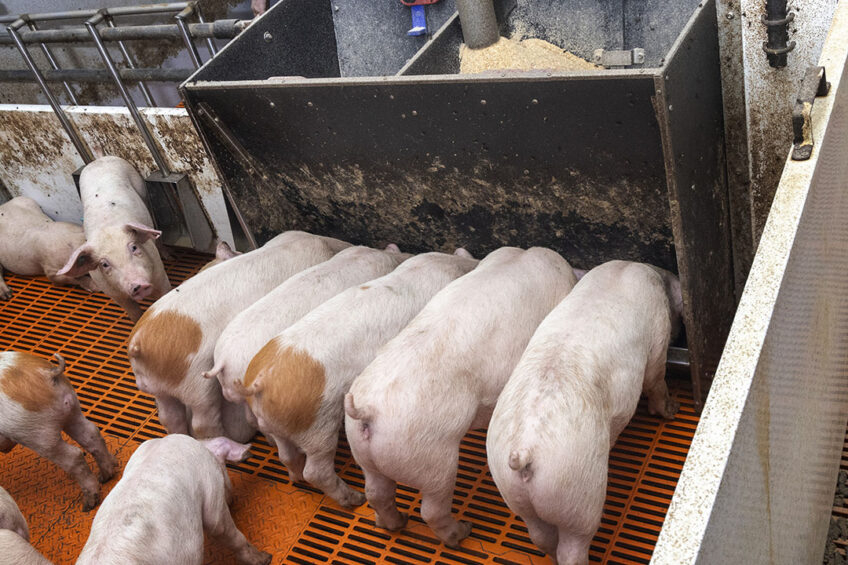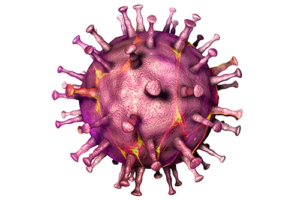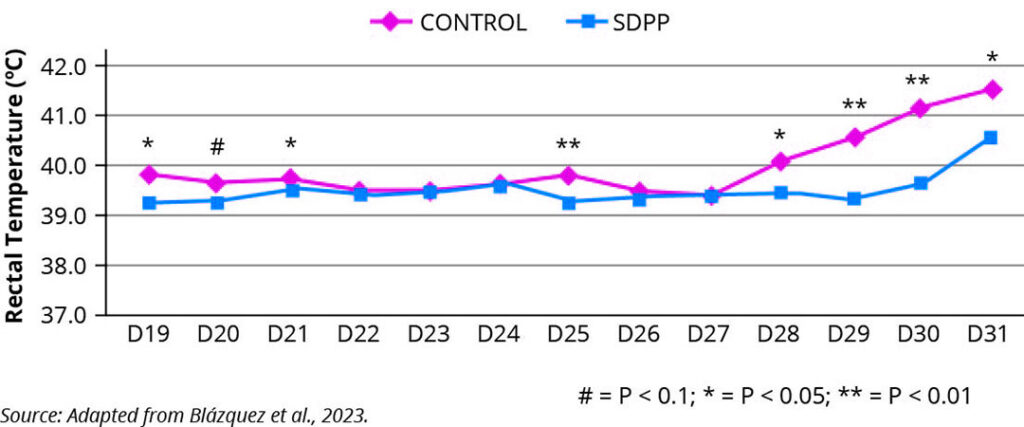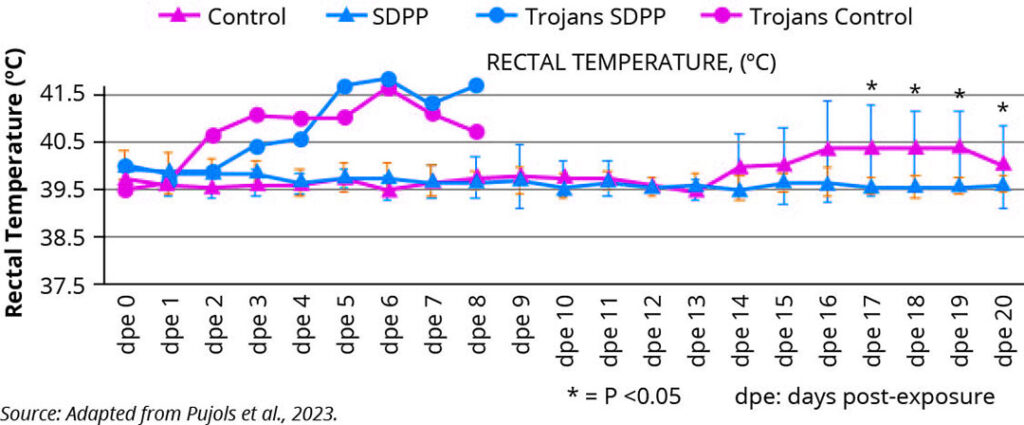A nutritional approach involving plasma to mitigating ASF severity

The toolbox to control African Swine Fever is still relatively empty. Stringent biosecurity measures are the most widely used approach, with pioneering vaccination only being allowed in some locations in Asia. A nutritional approach involving plasma has been observed to mitigate the virus’ severity.
It does not need a lot of explanation to illustrate the impact of African Swine Fever (ASF) on pig populations as well as global trade of pork. It causes severe economic consequences for producers, affiliated industries, and all communities involved in pork production. Despite all the efforts invested to obtain a safe and efficient vaccine against this lethal pig disease, so far these have been largely unsuccessful. There is, however, some hope on the horizon as several vaccine prototypes are under development, with actually 2 vaccines against ASF being officially approved and registered for use in Vietnam with a 3rd one underway. Trials are also underway in the Philippines.
Are there any nutritional strategies that can help to build immunity and support the efficacy of vaccination protection against ASF? Since dietary spray-dried plasma favours mucosal integrity protection and promotes optimal immune responses (including Th-1 and cytotoxic CD8 T-cells) its use may be of benefit under ASFv infection scenarios.
2 new studies, published in the peer-reviewed journal Vaccines, suggest that feed supplemented with spray-dried porcine plasma (SDPP) can favourably alter the immune response of both vaccinated and non-vaccinated pigs exposed to pigs infected with the pandemic Georgia 2007/01 strain of ASFv. The studies were conducted at the biosecurity level 3 facilities at the Centre de Recerca en Sanitat Animal (IRTA-CReSA), Barcelona, Spain.
AFRICAN SWINE FEVER (ASF)
Here you can find the latest information on the African Swine Fever virus and what you can do to prevent ASF entering your farm. Find out more…
Study 1: Reducing ASF virus load in infected pigs
In the first study, published in 2023, Dr Elena Blázquez and her team investigated the effect of feeding SDPP to pigs experimentally infected with ASFv. The study aimed to evaluate whether feeding SDPP to infected pigs could reduce the virus load and delay the transmission of the virus.
Non-vaccinated pigs in separate rooms were either fed a diet with 8% SDPP or a diet without SDPP throughout the study. After an adaptation period, ASFv-intentionally infected pigs (trojans) were placed in contact with both groups of non-vaccinated pigs for 4 days and then removed to simulate a natural route of transmission (ratio trojans:naïve pigs 1:5). Trojans developed ASF and died or had to be culled, but surprisingly, neither group of non-vaccinated pigs developed fever or became viraemic after 18 days of observation. The study was then extended, and another group of ASFv-infected pigs was placed in contact with the non-vaccinated pigs but at this time with a higher ratio of trojans:naïve pigs (1:2).
This time, both groups of non-vaccinated pigs eventually became infected, but the group of pigs fed the diet with SDPP had a lower virus load in their tissues (Table 1) and a delayed development of fever during the 12 days of observation after the second exposure (Figure 1). Furthermore, the non-vaccinated pigs fed the SDPP diet had a more robust number of ASFv-specific IFN-γ secreting cells in their blood nine days after the first exposure to ASF-infected pigs, which may have contributed to the delayed onset of ASFv infection and fever in this group of pigs.
Figure 1 – Average rectal temperatures over time of non-vaccinated contact pigs after second exposure period.

This response observed in the first study suggested that the nutritional intervention with SDPP can modulate the clinical expression of ASF. Therefore, it raised the question whether such dietary application would also exert a positive effect in ASFv vaccinated pigs.
Study 2: Improving vaccine efficacy
In the second study, also published in 2023, a team around Dr Pujols investigated the effect of feeding SDPP on the efficacy of an ASFv vaccine prototype (BA71∆CD2) against experimental challenge with the pandemic virus. The study aimed to evaluate whether feeding SDPP to vaccinated pigs could improve the protection afforded by the vaccine.
This prototype vaccine is a live attenuated product that provides protection against both homologous and heterologous ASFv strains. The attenuated virus can be grown in stable cell lines to facilitate large-scale production of the vaccine.
Figure 2 – Average rectal temperature over time of vaccinated pigs and non-vaccinated trojan pigs during exposure time.

For this study, 2 groups of pigs were acclimated to diets with or without 8% SDPP, and then intranasally inoculated with the vaccine. 3 weeks later, these animals were kept in direct contact with pigs infected with the pandemic Georgia 2007 wild strain (ratio trojans: naïve pigs 1:2). During the 20 days post-exposure period, 2 out of 6 animals from the control diet group showed a transient rectal temperature peak by the end of the study (Figure 2), and presence of ASFv genome in some tissue samples in most pigs.
Interestingly, the SDPP group did not show fever, neither ASFv genome in blood nor rectal swabs at any time and none of the postmortem collected tissue samples were positive for ASFv (Table 2). Differential serum cytokine profiles among groups at vaccination, and a higher number of ASFv-specific IFNϒ-secreting T-cells in pigs fed with SDPP soon after the Georgia 2007/01 encounter, suggest the relevance of Th1-like responses in ASF protection.
Overall, feeding diets containing SDPP enhanced the efficacy of the ASFv BA71∆CD2 vaccine and provides a novel nutritional strategy to improve the health status of pigs under ASFv infection conditions, and potentially for other disease conditions as well.
Helping to decrease economic losses
Nutritional strategies such as SDPP may help protecting swine herds and decreasing economic losses until a more widely available vaccine is developed. Both studies highlight the importance of developing effective strategies to combat this devastating disease in the pig industry.
References available on request.
* Authors Blázquez, Crenshaw, Campbell, Shen and Polo are attached to APC, Ankeny, IA, United States; authors Pujols, Rodríguez and Segalés are attached to IRTA-CReSA, Barcelona, Spain and author Gavrilov is attached to Huvepharma, Sofia, Bulgaria.











